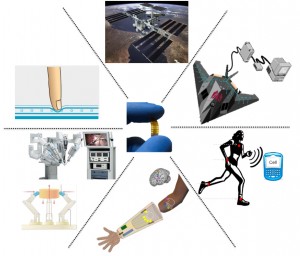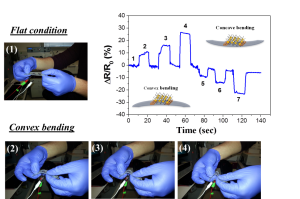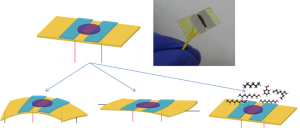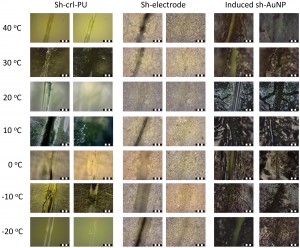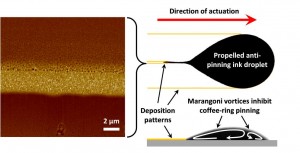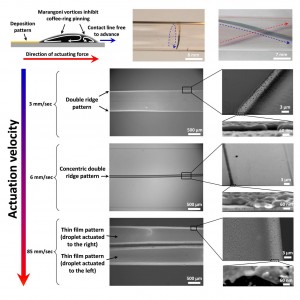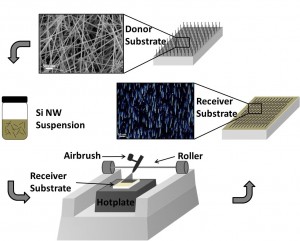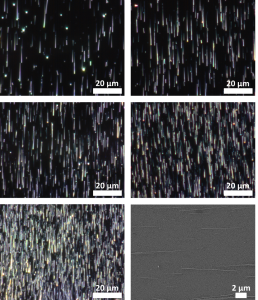The LNBD develops and employs different nanomaterials, such as metal nanoparticles, poly aromatic hydrocarbons, silicon nanowires and carbon nanotubes, in a variety of electronic devices. Control over the size, shape, structure and morphology of such nanospecies enables the design of complex sensing functions that can address practical requirements from sensing platforms. In addition, both fabrication using bottom-up wet chemistry approaches, and the utilization of organic material coatings are simple. This enables the use of nanomaterials for different applications. The LNBD focuses on the following applications:
Nanomaterial-based sensors: R&D for use in artificially intelligent nanoarray and electronic skin applications.
Self-healing sensors: development of electronic sensors with engineered structures that enable self-repair and full functionality following mechanically destructive damage.
Printed electronics: development of new printing and self-assembly techniques that enable the optimal implementation of nanomaterials in electronic devices.


